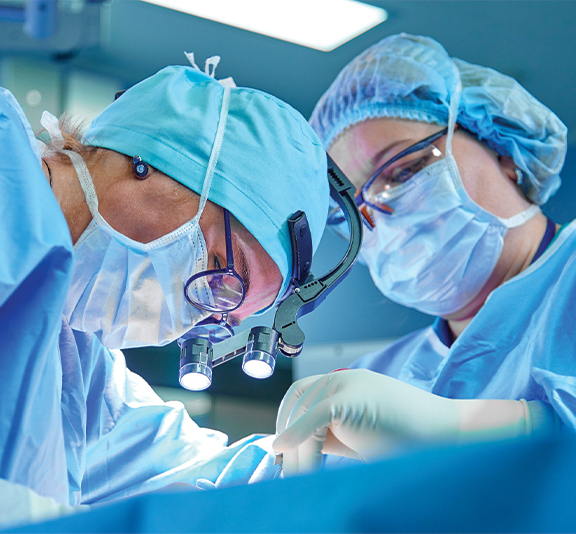

At Surya, we prioritize a patient-centric approach and strive to offer unwavering support to expectant mothers throughout their journey. Our team thoroughly analyses your unique situation and offers individualised treatment to guarantee a memorable and satisfying childbirth experience. In case of any emergency, our team adhere to a rapid response protocol, to ensure the safety and well-being of both, you and your little one.

A Caesarean section also referred to as a C-section, is a medical procedure in which the baby is delivered by making an incision through the mother’s abdomen and uterus.
The procedure may be elective or recommended when a female is experiencing complications that cannot be addressed via normal delivery.
Doctors usually recommend the procedure be performed after the completion of 39 weeks of pregnancy, as this allows the baby to develop properly, however in the case of any emergency, it may be performed prior to 39 weeks.
Depending on the approach that is followed during the procedure, a C-section can be of the following types:
Classical C-section: It is the traditional approach in which doctors make a vertical incision on the abdomen, as well as the uterus, to deliver the baby. The technique is not very common these days as you cannot have a normal delivery once you undergo a classical C-section. It is used in times of emergency if the baby is in a breech position or if it’s a preterm delivery.
Low transverse C-section: Also known as bikini incision C-section, it is a relatively new and highly preferred method in which the baby is delivered by making a horizontal incision right on top of the pubic hairline. Even after undergoing the procedure, you can choose to go for normal delivery in future.
There are times when expecting mothers want to go for a C-section as their personal choice, however, there are also certain circumstances that may call for the need for a C-section as the preferred approach.
Our experts may recommend you go for the procedure if:
C-section may also be recommended in emergency situations when:
If you preparing for a C-section, here are a few things that you need to take care of:
The procedure is performed under the influence of anaesthesia (spinal, epidural or general) and can take anywhere between 30 minutes to an hour.
Every woman’s recovery journey will be unique, however, it is essential that you adhere to the detailed instructions and advice given to you by our team, for added safety at every step.
Soon after the effect of the anaesthesia wears off, you are likely to experience pain and soreness after the surgery. This is temporary and can be managed with prescribed pain medication.
We staunchly emphasize breastfeeding and bonding. Our expert will help you with the process as it can be a bit challenging if it is your first time. In case, the mother is not able to feed the baby, we also offer a specialized Human Milk Bank facility to ensure your baby’s nutrition and well-being are not being compromised.
You will be assigned a midwife/nurse to help you during your hospital stay who will take care of your needs and guide you with their knowledge and experience. Your diet, nutrition and medication will be taken care of to make sure you can cherish quality time with your baby and family.
To facilitate swift and sound recovery, you will be encouraged to walk around. These alleviate the risks of complications like clotting and swelling.
C-sections offer a safe alternative for high-risk pregnancies and for managing related emergencies. The technique also offers a plethora of other benefits, which include:
A C-section may be advised for several reasons, such as fetal distress, labour problems, or health issues that increase the risk of vaginal delivery.
Anesthesia is used to manage the discomfort after a C-section, and recovery times vary. Since this is a surgical operation, some discomfort is to be expected while the wound heals.
After a C-section, breastfeeding is recommended, and medical professionals can provide advice on placement and support.
Recovery times vary, but with the right postoperative care, most women can get back to their regular activities in six weeks.
A vaginal birth after a prior C-section (VBAC) is feasible in certain circumstances, but it relies on things like the cause of the prior cesarean section and one's present state of health. See your healthcare provider for specific recommendations.
It is good to be curious when it comes to your health, but, it is equally important to put your curiosity to rest by seeking expert opinion. Have more questions related to your health?
Meet the compassionate souls behind our services. Our dedicated team of professionals is here to ensure you receive the best care, always

Meet the compassionate souls behind our services. Our dedicated team of professionals is here to ensure you receive the best care, always
Our commitment to world-class care is reflected in our numerous certifications, awards, and partnerships. Trust in our proven track record of excellence.
